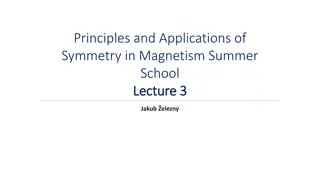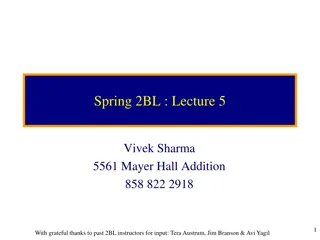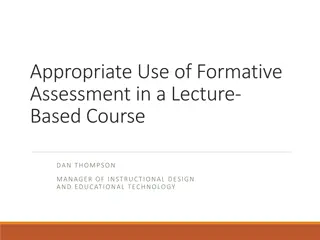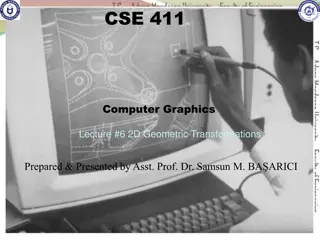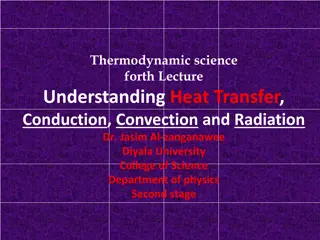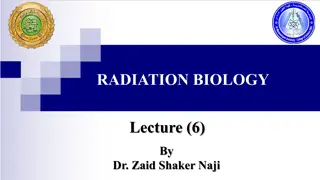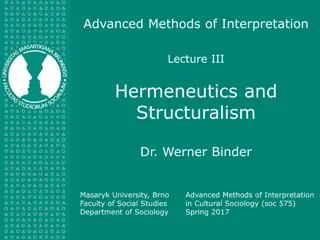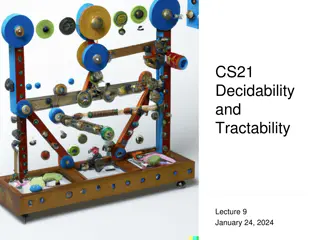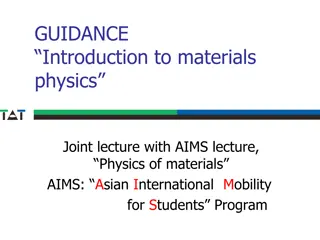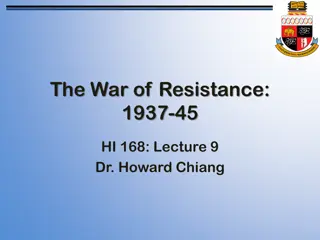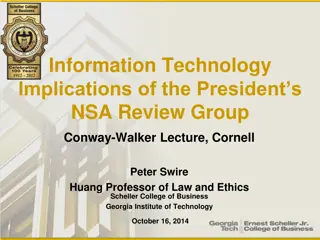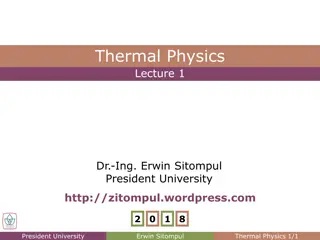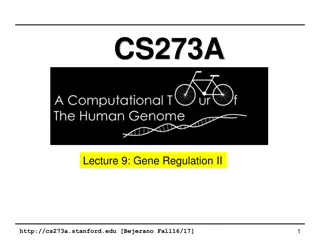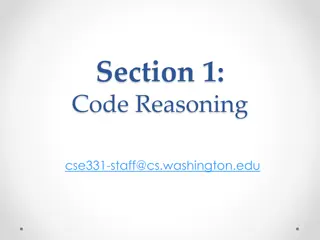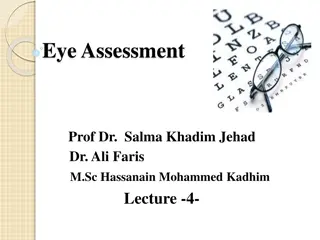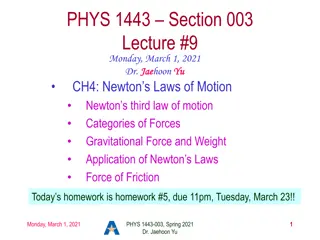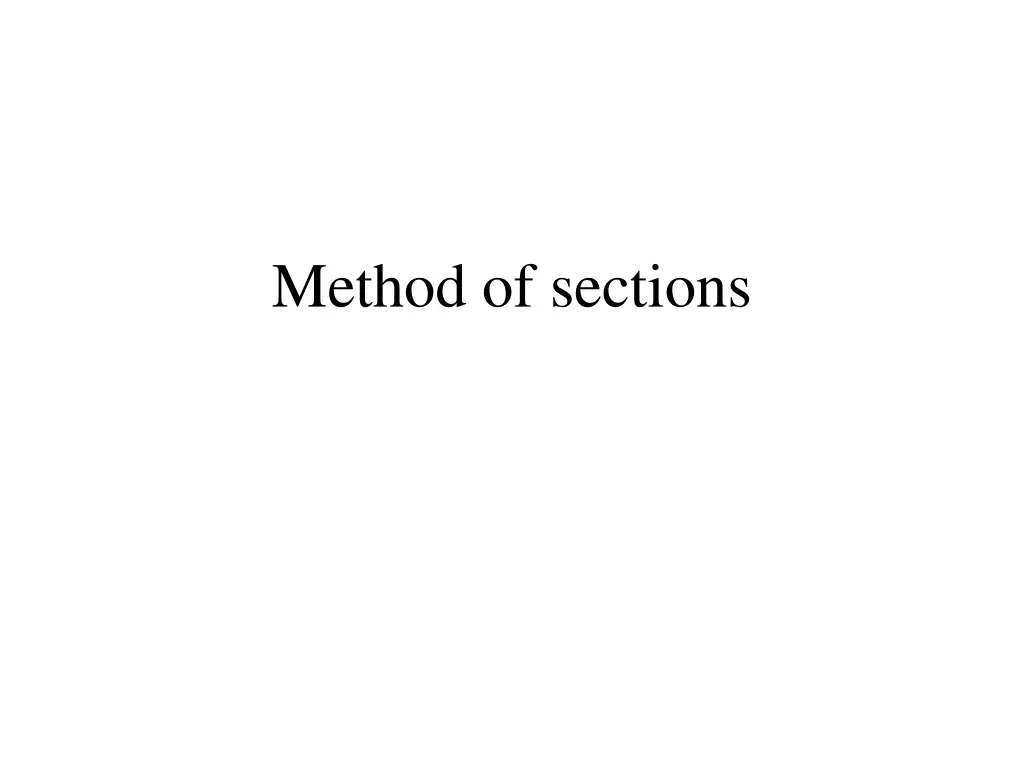
Truss Analysis using Method of Sections
Understand the Method of Sections for truss analysis, which involves cutting the truss to expose internal forces. Learn how to apply equilibrium equations to find forces in the members. Solve a specific truss problem step by step using this method.
Download Presentation

Please find below an Image/Link to download the presentation.
The content on the website is provided AS IS for your information and personal use only. It may not be sold, licensed, or shared on other websites without obtaining consent from the author. If you encounter any issues during the download, it is possible that the publisher has removed the file from their server.
You are allowed to download the files provided on this website for personal or commercial use, subject to the condition that they are used lawfully. All files are the property of their respective owners.
The content on the website is provided AS IS for your information and personal use only. It may not be sold, licensed, or shared on other websites without obtaining consent from the author.
E N D
Presentation Transcript
Method of Sections It is based on the principle that if the truss is in equilibrium then any segment of the truss is also in equilibrium. In this method, a section is passed through the truss to cut it into two parts so that internal forces are exposed at the cut members. Equations of equilibrium are then applied to the free body diagram of either of the two parts to determine the desired forces. In choosing a section of the truss, in general, not more than three members whose forces are unknown may be cut, since there are only three available equilibrium equations which are independent. The method of sections has the basic advantage that the force in almost any desired member may be found directly. June 4, 2025 2
An Important Note If a body is in equilibrium under the action of external forces (including support reactions) then its each and every part is also in equilibrium under the action of external and internal forces. 6/4/2025 3
Problem -1 Compute the forces in the members DC, DB and AB of the truss, shown here, using method of sections. 2.4 m 2 kN D C 1.8 m A B 6/4/2025 4
Support Reactions 2.4 m 2 kN D Support Reactions C 1.8 m + = M + = = ( CCW ) 0 2 0 2 kN = F A A x x x + = 8 . 1 4 . 2 ( ) 0 2 0 A A B y B x A = 5 . 1 kN A y + = + = 5 . 1 = ( ) 0 0 kN F A B B y y y y y A B y = + = 2 2 8 . 1 = 4 . 2 = 3 m BD cos 4 . 2 / 3 ; 8 . 0 8 . 1 = = sin / 3 6 . 0 6/4/2025 5
Calculation of the member forces F D DC 2.4 m 2 kN D C 1.8 m B A 2 kN cos F DB F AB A F sin F B DB x A DB 5 . 1 kN = + = 2 2 8 . 1 = 4 . 2 = 3 m BD cos 4 . 2 / 3 ; 8 . 0 5 . 1 kN 5 . 1 kN 8 . 1 = = sin / 3 6 . 0 For convenience, assume tension in all the cut members. + = 5 . 1 = = / 5 . 1 ( ) 0 sin 0 sin F F F y DB DB = / 5 . 1 = 5 . 2 6 . 0 kN(C) F DB 6/4/2025 6
Calculation of the member forces 2.4 m 2 kN D F C D DC 1.8 m = + = 2 2 8 . 1 = 4 . 2 = 3 m BD cos 4 . 2 / 3 ; 8 . 0 A 8 . 1 = = sin / 3 6 . 0 B x A B A 2 kN cos F DB F AB F sin F DB 5 . 1 kN DB 5 . 1 kN 5 . 1 kN + = = ( ) 0 sin 4 . 2 = 8 . 1 = 0 CCW M F F A DB F DC F ) 5 . 2 6 . 0 4 . 2 8 . 1 ( 0 kN(T) 2 DC + DC + F = + + F = ( ) 0 2 cos 0 F F F F x AB DB DC = ) 5 . 2 8 . 0 ) 2 = = 2 ( ( 2 2 kN (T) AB AB 6/4/2025 7
Member forces Member Forces (kN) Method of Joint Forces (kN) Method of section Nature AB 2.0 2.0 Tension DC 2.0 2.0 Tension DB -2.5 -2.5 Compression 6/4/2025 8
Example 6 (continued): 6 - 10
Example 7 (continued): 6 - 12
Solution of Part 1 (Support Reactions at A and F) 50 kN 40 kN 2 m 2 m 2 m D + = E ( ) 0 CCW M A 1.5 m + + + 5 . 1 = 4 40 2 30 3 40 0 F y C 30 kN = 57 5 . = kN F F G H y 1.5 m + A + = 0 30 40 0 F A B x x 40 kN I = 70 = kN Fy 1.5 m x A + + = 0 40 50 0 F A F Ax y y y = 32 5 . kN A y Ay 6/4/2025 13
Solution of Part 2 (Zero Force Members) 50 kN 40 kN 2 m 2 m 2 m D E Only member GE is a zero force member as members FG and GH are collinear and there is no external force acting at joint G. 1.5 m C 30 kN F G H 1.5 m B 40 kN I Fy 1.5 m A Ax Ay 6/4/2025 14
Solution of Part 3 (Forces in the members using Method of Joints) 50 kN 40 kN 2 m 2 m 2 m FFE D F E FFG 1.5 m C 30 kN Fy= 57.5 kN F G H 1.5 m B = = 5 . 1 = = cos 2 5 . 2 / ; 8 . 0 sin /2.5 0.6 40 kN I Fy 1.5 m A Ax + = + = + 6 . 0 = 0 57 5 . sin 0 57 5 . 0 F F F y FE FE = 95 = 8 . kN F (C) + F FE + F = = 8 . 0 = 0 cos 0 0 F F F F Ay x FG FE FG FE = 8 . 0 ( 95 ) 8 . FG = 76 64 . (T) F FG 6/4/2025 15
Solution of Part 4 (Forces in the members using Method of Sections) 40 kN 50 kN 40 kN 2 m 2 m 2 m 2 m 2 m FED D E D E 1.5 m FGH F 1.5 m G H C 30 kN FEH F G H 1.5 m Fy = 57.5kN B 40 kN I = = 5 . 1 = = cos 2 5 . 2 / ; 8 . 0 sin /2.5 0.6 Fy 1.5 m A Ax + = + 5 . 1 = ( ) 0 57 5 . 4 40 2 0 CCW M F H ED = 100 kN (C) F ED Ay + = = 0 57 5 . 40 sin = 0 F F y EH = 17 5 . 6 . 0 0 29 + 2 . F kN = (T) F F EH EH F + = + = 8 . 0 100 = 0 cos 0 29 17 . ( ) 76 7 . kN (T) F F F x EH ED GH GH 6/4/2025 16


